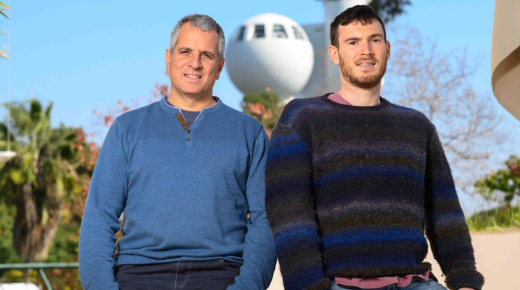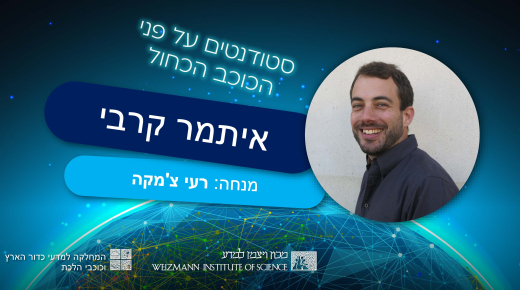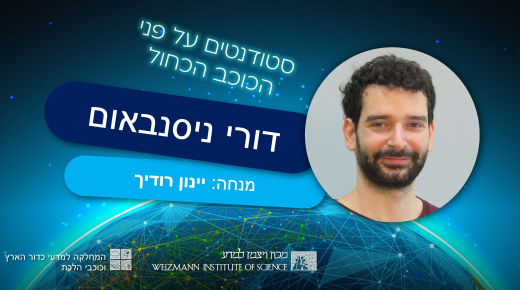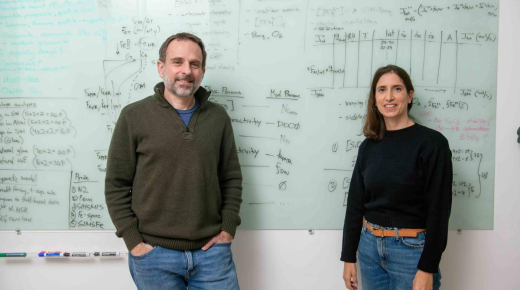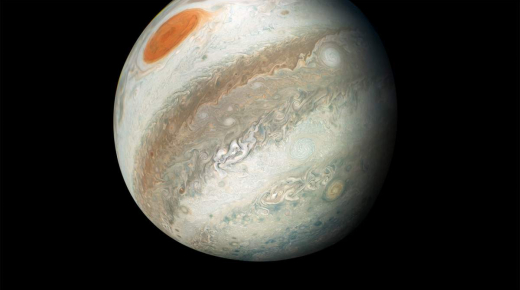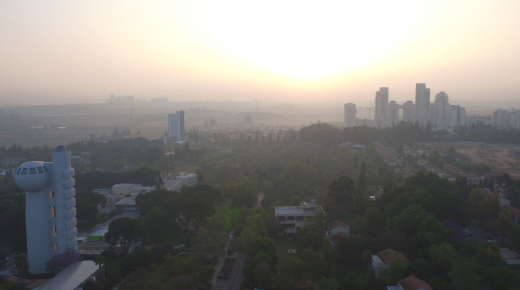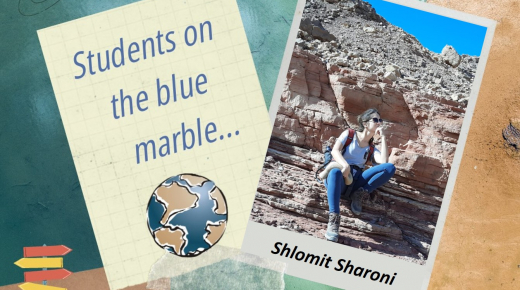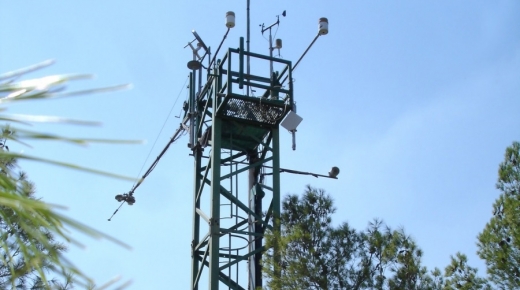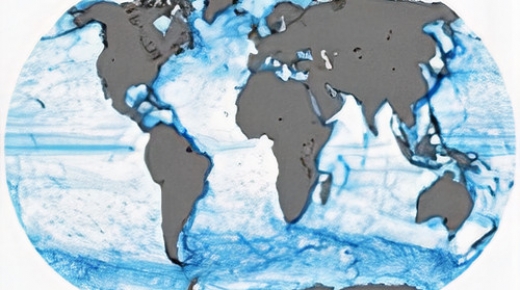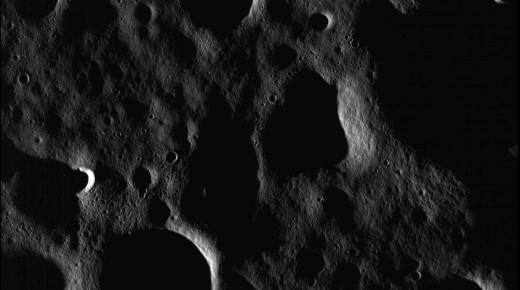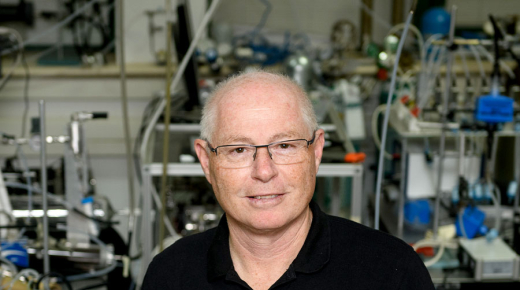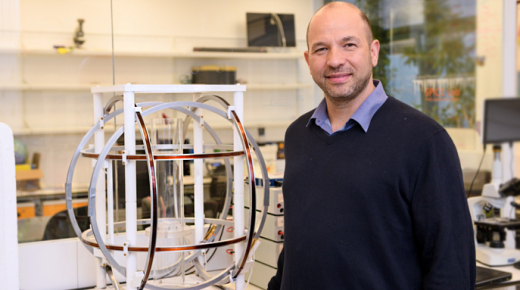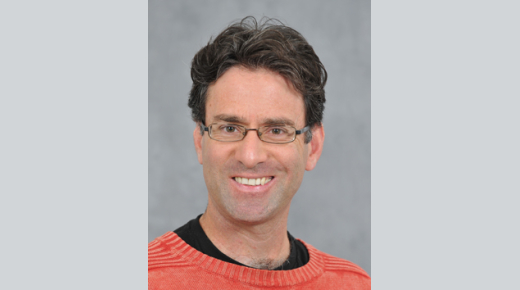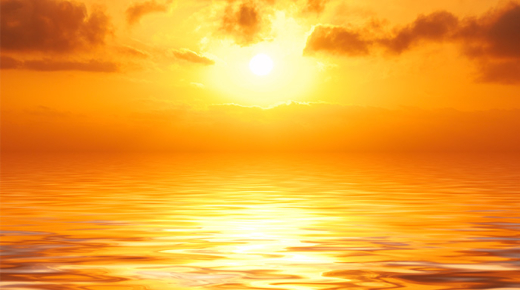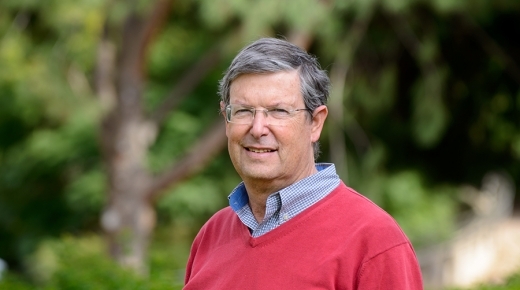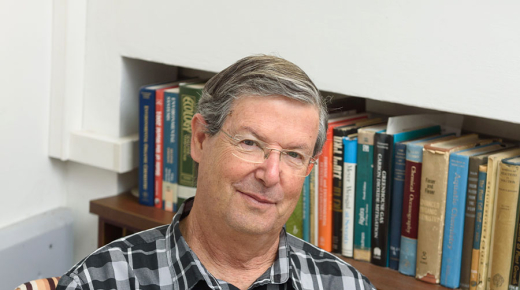-
Date: December 17, 2025
Tracking Africa’s Changing Lands: The Weizmann Mobile Lab Sets Out on a New Climate Mission
Read More about Tracking Africa’s Changing Lands: The Weizmann Mobile Lab Sets Out on a New Climate MissionAfrica’s landscapes are transforming faster than almost anywhere else on Earth, yet the continent remains one of the world’s largest blind spots in climate observations. This year, a unique scientific expedition aims to change that. After a months-long sea journey around the continent, the Weizmann Institute’s fully equipped Biosphere–Atmosphere Research Mobile Lab is about to roll onto African soil, launching an ambitious campaign to measure how land-use change is reshaping the region’s carbon, water, and energy cycles. Led by Prof. Dan Yakir, Dr. Eyal Rotenberg, Dr. Dan Elhanati, and their students and postdocs team, the mission brings state-of-the-art climate science directly to places where nearly no ground-based measurements exist, opening a rare window into East Africa’s rapidly shifting environments.
הנופים של אפריקה משתנים בקצב מהיר יותר כמעט מכל מקום אחר על פני כדור הארץ, אך היבשת נותרה אחד מהאזורים הפחות נחקרים בעולם בתחום תצפיות האקלים. השנה יוצאת משלחת מדעית ייחודית שמטרתה לשנות זאת. לאחר מסע ימי בן כמה חודשים סביב היבשת, המעבדה הניידת לחקר הביוספרה–אטמוספרה של מכון ויצמן למדע תעלה על אדמת אפריקה ותצא למסע מחקר שאפתני למדידת השפעת שינויי השימוש בקרקע על מחזורי הפחמן, המים והאנרגיה באזור. המשימה, בהובלת פרופ' דן יקיר, ד"ר אייל רוטנברג, ד״ר דן אלחנתי, וסטודנטים ופוסט-דוקטורנטים מצוותם, מביאה את מדע האקלים המתקדם ביותר אל מקומות שבהם כמעט ולא קיימות מדידות קרקעיות, ופותחת חלון נדיר להבנת השינויים המהירים בסביבה של מזרח אפריקה.
Read More about Tracking Africa’s Changing Lands: The Weizmann Mobile Lab Sets Out on a New Climate Mission -
Date: November 13, 2025
Congratulations to Yotam Menachem for winning the Outstanding Student and PhD candidate Presentation (OSPP) Awards 2025 of the European Geophysical Society (EGU)!
Read More about Congratulations to Yotam Menachem for winning the Outstanding Student and PhD candidate Presentation (OSPP) Awards 2025 of the European Geophysical Society (EGU)!Congratulations to Yotam Menachem, an MSc student from the Department of Earth and Planetary Sciences at the Weizmann Institute of Science, supervised by Prof. Dan Yakir and Prof. Shira Raveh-Rubin, for winning the Outstanding Student and PhD candidate Presentation (OSPP) Awards 2025 of the European Geophysical Society (EGU)!
Read More about Congratulations to Yotam Menachem for winning the Outstanding Student and PhD candidate Presentation (OSPP) Awards 2025 of the European Geophysical Society (EGU)! -
Date: November 4, 2025
The Hidden Waters That Shape the Ocean – and the Climate
Read More about The Hidden Waters That Shape the Ocean – and the ClimateWe’ve gone to the bottom of the ocean to study how its chemistry shapes our planet’s climate, even chasing lava-spewing underwater volcanoes to do it. But it turns out we may have missed something far closer to home: the water beneath our feet. In a study published recently in Nature Communications, Dr.
Read More about The Hidden Waters That Shape the Ocean – and the Climate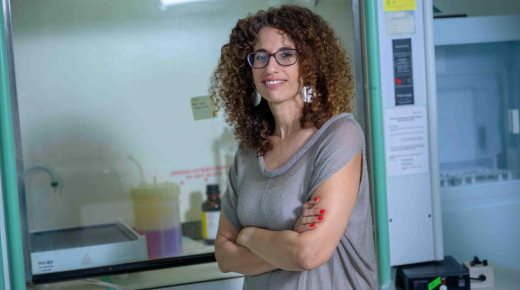
-
Date: October 29, 2025
Congratulations to Prof. Yohai Kaspi
Houghton Lectures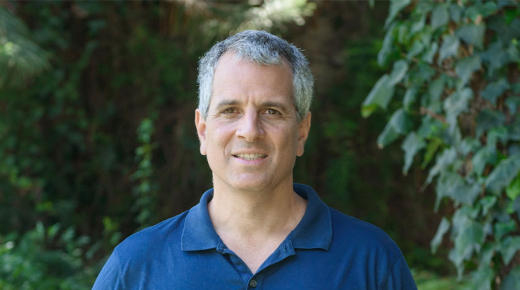
-
Date: October 20, 2025
A Simple Explanation for a Cosmic Puzzle
Read More about A Simple Explanation for a Cosmic PuzzleBlasting around the equators of the solar system’s giant planets – Jupiter, Saturn, Uranus and Neptune – are fierce jet streams reaching speeds of 500 to 1,500 kilometers per hour. For years, scientists have puzzled over why these extreme winds blow eastward on Jupiter and Saturn but westward on Uranus and Neptune, even though the four planets share similar conditions: All receive little sunlight, possess a moderate internal heating source and rotate rapidly.
Read More about A Simple Explanation for a Cosmic Puzzle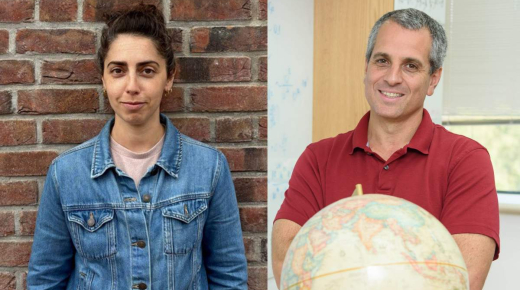
-
Date: July 16, 2025
Congratulations to Dr. Rei Chemke
Scientific Council Prize for Chemistry
-
Date: July 16, 2025
Congratulations to Dr. Eyal Rotenberg
Maxine Singer Prize for Outstanding Staff Scientists
-
Date: June 12, 2025
ראיון עם אלי וינדבר סטודנט לדוקטורנט
Read More about ראיון עם אלי וינדבר סטודנט לדוקטורנטהכירו את אלי וינדבר, דוקטורנט במחלקה למדעי כדוה"א וכוכבי הלכת במכון ויצמן.
בראיון קצר, אלי משתף על מחקרו בכימיה אטמוספרית, שבמרכזו זיהוי טביעות־אצבע כימיות של מזהמי אוויר, צעד חשוב בדרך לניטור מדויק יותר ולשיפור איכות האוויר שכולנו נושמים.Meet Eli Windwer, a PhD student in the Department of Earth and Planetary Sciences at the Weizmann Institute of Science.
In this short interview, Eli shares about his research in atmospheric chemistry, focusing on identifying chemical fingerprints of air pollutants, a crucial step toward more accurate monitoring and improving the quality of the air we all breathe.Read More about ראיון עם אלי וינדבר סטודנט לדוקטורנט -
Date: May 28, 2025
ראיון עם אור הס, סטודנטית לדוקטורט במחלקה
Read More about ראיון עם אור הס, סטודנטית לדוקטורט במחלקההכירו את אור הס, דוקטורנטית בשנה השנייה בקבוצתו של דר. רעי צ'מקה, החוקרת כיצד גורמים אנושיים וטבעיים משפיעים על דינמיקת האטמוספירה. בראיון זה, אור מספרת על המחקר שלה, הדרך שהביאה אותה לתחום, ומה היא עושה מחוץ למעבדה.
Meet Or Hess, a second-year PhD student in the group of Dr. Rei Chemke, who explores how human and natural factors influence atmospheric dynamics. In this interview, Or discusses her research, what led her to the field, and how she spends her time outside the lab.
Read More about ראיון עם אור הס, סטודנטית לדוקטורט במחלקה -
Date: May 19, 2025
Congratulations to Dr. Rei Chemke
Krill Prize
-
Date: January 7, 2025
Congratulations to Prof. Itay Halevy
Michael Bruno Award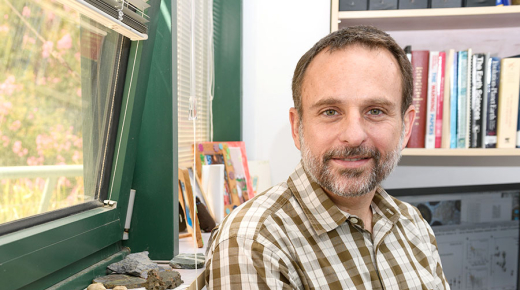
-
Date: December 23, 2024
An Interview with the Department Member Dr. Volker Perdelwitz
Read More about An Interview with the Department Member Dr. Volker PerdelwitzMeet Dr. Volker Perdelwitz, a postdoc of Prof. Oded Aharonson at the EPS department. Volker studies exoplanets and their atmospheres, searching for signs of life using data from the James Webb Space Telescope. Volker shares his path to the Weizmann Institute and what makes the EPS department stand out.
הכירו את ד"ר וולקר פרדלויץ, פוסטדוקטורנט בקבוצתו של פרופ. עודד אהרונסון במחלקה למדעי כדור הארץ וחקר כוכבי הלכת. וולקר חוקר את ההרכב האטמוספרי של פלנטות מחוץ למערכת השמש, בחיפוש אחר סימני חיים בעזרת נתונים מטלסקופ החלל ג'יימס וב. וולקר משתף איך הגיע למכון ויצמן ומה הופך את המחלקה לייחודית.
Read More about An Interview with the Department Member Dr. Volker Perdelwitz -
Date: December 12, 2024
ראיון עם בוגר המחלקה למדעי כדוה"א וחקר כוכבי הלכת: ד"ר דן אלחנתי
Read More about ראיון עם בוגר המחלקה למדעי כדוה"א וחקר כוכבי הלכת: ד"ר דן אלחנתיהכירו את דן אלחנתי, מהמחלקה למדעי כדור הארץ וחקר כוכבי הלכת. במהלך לימודי הדוקטורט בהנחייתו של פרופ' בריאן ברקוביץ, דן חקר תופעות של הסעת מזהמים במי תהום, ובנה מודלים ללמידת מנגנוני תנועת המזהמים. כיום, בפוסט-דוקטורט בקבוצת פרופ' דן יקיר, הוא מתמקד באינטראקציות בין הביוספריה והאטמוספירה בעזרת מעבדה ניידת, כחלק מפרויקט מחקר משותף עם מכון מקס פלאנק.
Meet Dan Elhanati from the Department of Earth and Planetary Sciences. During his PhD studies under the supervision of Prof. Brian Berkowitz, Dan investigated contaminant transport phenomena in groundwater and developed models to study the mechanisms of contaminant movement. Currently, as a postdoctoral researcher in Prof. Dan Yakir’s group, he focuses on biosphere-atmosphere interactions using a mobile research lab, as part of a collaborative project with the Max Planck Institute.
Read More about ראיון עם בוגר המחלקה למדעי כדוה"א וחקר כוכבי הלכת: ד"ר דן אלחנתי -
Date: November 15, 2024
ראיון עם בוגר המחלקה למדעי כדוה"א וחקר כוכבי הלכת: ד"ר יונתן גבעון
Read More about ראיון עם בוגר המחלקה למדעי כדוה"א וחקר כוכבי הלכת: ד"ר יונתן גבעוןיונתן גבעון, דוקטורנט בהנחייתה של דר. שירה רוה-רובין, הגיע למחלקה למדעי כדור הארץ לאחר שנפגש עמה בכנס בשדה בוקר במסגרת לימודיו בתואר השני. המפגש הזה הצית בו עניין עמוק בחקר מזג האוויר הקיצוני, והוביל אותו להצטרף לקבוצה שלה במחלקה.
יונתן עוסק בחקר סופות ים תיכוניות, תוך חקר המנגנונים המניעים אותן ואופן השפעתן על אירועי מזג אוויר קיצוניים. הוא שואף להעמיק את ההבנה של תהליכים אלה כדי לשפר תחזיות אקלים עתידיות ולהיערך טוב יותר לשינויי האקלים.
Yonatan Givon, a Ph.D. student under the supervision of Dr. Shira Raveh-Rubin, joined the Department of Earth Sciences after meeting her at a conference in Sde Boker during his master's studies. This encounter sparked a deep interest in the study of extreme weather, leading him to join her research group in the department.
Yonatan’s research focuses on Mediterranean storms, investigating the mechanisms that drive them and their impact on extreme weather events. He aims to deepen the understanding of these processes to improve future climate forecasts and better prepare for climate change.
Read More about ראיון עם בוגר המחלקה למדעי כדוה"א וחקר כוכבי הלכת: ד"ר יונתן גבעון -
Date: September 24, 2024
ראיון עם בוגרת המחלקה למדעי כדוה"א וחקר כוכבי הלכת: ד"ר גבריאלה אדלר
Read More about ראיון עם בוגרת המחלקה למדעי כדוה"א וחקר כוכבי הלכת: ד"ר גבריאלה אדלרהכירו את דר. גבריאלה אדלר, בוגרת המחלקה למדעי כדוה"א וחקר כוכבי הלכת בקבוצתו של פרופ. ינון רודיך. גבריאלה משתפת אותנו במסלול המרתק שעברה ממעבדות מחקר לתפקידים בתעשיית ההייטק.
המסר שלה לסטודנטים: "אחד הדברים החשובים לעשות בחיים הוא לצאת מאזור הנוחות כל הזמן. לעשות דברים שמפחדים מהם. אם זה לא מסוכן, פשוט תעשו כי ככה גדלים ולומדים. קחו משהו שאתם מפחדים לעשות ומרגישים שאתם לא מבינים בו כלום, ותכנסו בזה. ככה לומדים ומתקדמים."
Meet Dr. Gabriela Adler, a graduate of the Department of Earth and Planetary Sciences in the group of Prof. Yinon Rudich. Gabriela shares her fascinating journey from research labs to key roles in the high-tech industry.
Her message to students: "One of the most important things to do in life is to constantly step out of your comfort zone. Do things that scare you. If it’s not dangerous, just do it because that’s how you grow and learn. Take on something that intimidates you or that you feel completely clueless about, and dive into it. That’s how you learn and make progress."
Read More about ראיון עם בוגרת המחלקה למדעי כדוה"א וחקר כוכבי הלכת: ד"ר גבריאלה אדלר -
Date: September 19, 2024
Stormy Findings and Hot Discoveries
Read More about Stormy Findings and Hot DiscoveriesThe summer of 2024 was the hottest on record and, unfortunately, this came as no surprise. Summers have been getting hotter and drier around the world, including in the Northern Hemisphere, leading to intense droughts and heatwaves in North America and Europe and posing serious risks to society such as wildfires, crop failures and health hazards. Part of the problem is that the Earth’s air circulation systems, which help spread and disperse moisture and heat throughout the world, have been weakening over the years. However, the exact reasons for this weakening have eluded researchers.
Read More about Stormy Findings and Hot Discoveries
-
Date: August 13, 2024
Congratulations to Dr. Nimrod Gavriel
Prof. Israel Dostrovsky Prize of Excellence
-
Date: July 31, 2024
ראיון מיוחד עם ניתאי עמיאל! בוגר המחלקה למדעי כדור הארץ וכוכבי הלכת במכון ויצמן
Read More about ראיון מיוחד עם ניתאי עמיאל! בוגר המחלקה למדעי כדור הארץ וכוכבי הלכת במכון ויצמןבמהלך הראיון, ניתאי משתף אותנו במסע האקדמי שלו, ההחלטות שהובילו אותו למחקר בתחום זיהום הקרקעות ומי התהום, והאתגרים שבהם הוא מתמודד במחקרו. כמו כן, הוא מספר על הפרויקטים המרתקים שהיה מעורב בהם ועל השאיפות לעתיד. לאחרונה, ניתאי התחיל לעבוד כחוקר בחברת ריווינד (Rewind) המתמחה בטכנולוגיות סביבתיות מתקדמות לקיבוע פחמן, שם הוא ממשיך לתרום לפתרונות סביבתיים משמעותיים.
During the interview, Nitai shares his academic journey, the decisions that led him to research in the field of soil and groundwater contamination, and the challenges he faces in his research. He also talks about the fascinating projects he has been involved in and his aspirations for the future. Recently, Nitai began working as a researcher at Rewind, a company specializing in advanced environmental technologies for carbon sequestration, where he continues to contribute to significant environmental solutions.
Read More about ראיון מיוחד עם ניתאי עמיאל! בוגר המחלקה למדעי כדור הארץ וכוכבי הלכת במכון ויצמן -
Date: February 6, 2024
Congratulations to Dr. Yael Kiro
Raphael (Rafi) Freund Award
-
Date: December 12, 2023
When Dryness Intrudes, Floods Ensue
Read More about When Dryness Intrudes, Floods EnsueIn 2018, in the Indian state of Kerala, more than 400 people died in a single series of floods that displaced millions. Flooding is a regular feature of the yearly monsoon season in tropical Asia, but until now it has been difficult to predict how and when the normally heavy monsoon rainfall would ratchet up into a nightmare event of severe flooding. New research by a Weizmann Institute of Science research group may broaden the forecast window by pointing to an event – surprisingly, the arrival of dry air – that may presage extra-strong rains.
Read More about When Dryness Intrudes, Floods Ensue
-
Date: August 14, 2023
Congratulations to Prof. Yohai Kaspi
Nasa Honor Award
-
Date: July 20, 2023
Congratulations to Prof. Itay Halevy
The Andre Deloro Prize for Scientific Research
-
Date: July 16, 2023
הכירו את דותן שניו, בוגר תואר שני בקבוצתו של בריאן ברקוביץ
Read More about הכירו את דותן שניו, בוגר תואר שני בקבוצתו של בריאן ברקוביץדותן שניו הינו בוגר תואר שני בקבוצתו של בריאן ברקוביץ במחלקה למדעי כדה"א וכוכבי לכת. הוא הגיע למכון מתחום הרוקחות, מתוך רצון ללמוד לעומק מנגנונים מולקולריים של חומרים תרופתיים והצטרף לקבוצתו של בריאן. כיום הוא רוקח במרכז הרפואי קפלן ברחובות, ואחראי על סיוע וייעוץ רוקחי ותרופתי בחטיבת הילדים.
Dotan Shaniv is a master's degree graduate in Brian Berkowitz's group at the EPS Department. He came to the institute from the pharmacy field and joined Brian's group to deepen his understanding of medicinal substances' molecular mechanisms. Today, he is a pharmacist at the Kaplan Medical Center in Rehovot and is responsible for medicinal and pharmaceutical consultancy in the children's ward at the hospital.
Read More about הכירו את דותן שניו, בוגר תואר שני בקבוצתו של בריאן ברקוביץ -
Date: June 20, 2023
הכירו את איתמר קרבי, סטודנט לדוקטורט בקבוצתו של ד"ר רעי צ'מקה
Read More about הכירו את איתמר קרבי, סטודנט לדוקטורט בקבוצתו של ד"ר רעי צ'מקהאיתמר חוקר את שינויי האקלים בקווי הרוחב הבינוניים במסגרת לימודי הדוקטורט שלו אצל ד"ר רעי צ'מקה. היעד שלו הוא לענות על הצורך הדחוף להבין איך האקלים משתנה ולנסות לפתור את הבעיה הזו, שהופכת חמורה ודחופה מרגע לרגע
Itamar's doctoral research, under the supervision of Dr. Rei Chemke, focuses on climate change in the mid-latitudes. His goal is to address the urgent need to understand how climate is changing and to try to solve this pressing issue, which is becoming increasingly severeRead More about הכירו את איתמר קרבי, סטודנט לדוקטורט בקבוצתו של ד"ר רעי צ'מקה -
Date: June 16, 2023
Dust in the Wind: Forecasting Storms with AI
Read More about Dust in the Wind: Forecasting Storms with AIDust storms are not only a nuisance for anyone trying to keep their house spick and span, they also pose a very real health hazard and are a major ecological concern. Respiratory problems caused by breathing in dust and other airborne particles are one of the main causes of death worldwide. To make matters even worse, dust particles, which travel freely from country to country and from continent to continent, can spread pathogens, possibly contributing to the outbreak of pandemics.
Read More about Dust in the Wind: Forecasting Storms with AI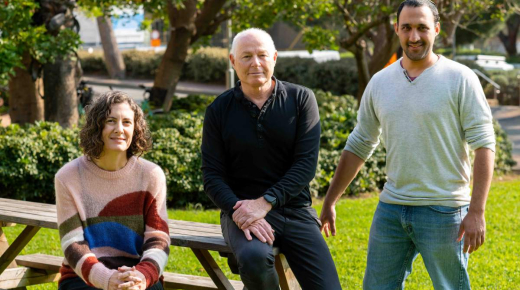
-
Date: May 29, 2023
Tracking the Winds of Climate Change
Read More about Tracking the Winds of Climate ChangeIn the tropics, above the equatorial rainforests and oceans, the strong solar radiation hitting Earth propels a stream of warm, moist air far upward. Once reaching the upper atmosphere, this stream moves in both hemispheres toward the poles; it then descends in the subtropical regions at around 20 to 30 degrees latitude, contributing to the creation of massive deserts like the Sahara in northern Africa. From there, the stream – known as the Hadley cell – returns to the equator, where it heats up and rises again, embarking on its circular journey anew.
Read More about Tracking the Winds of Climate Change
-
Date: May 25, 2023
Congratulations to Prof. Shira Raveh-Rubin
Scientific Council Prize for Chemistry
-
Date: April 13, 2023
Across the Universe: Israeli Tech to Reach Deep Space for the First Time
Read More about Across the Universe: Israeli Tech to Reach Deep Space for the First TimeThe journey to Jupiter has begun. The European Space Agency’s unmanned spacecraft JUICE (short for JUpiter ICy moons Explorer) was recently launched from Europe’s Spaceport in French Guiana. JUICE’s voyage, the ESA’s most ambitious mission to date, will be particularly lengthy: Upon reaching Jupiter’s orbit by 2031, it will embark on a four-year mission to investigate three of Jupiter’s moons – Callisto, Europa and Ganymede – as well as the composition of Jupiter’s atmosphere.
Read More about Across the Universe: Israeli Tech to Reach Deep Space for the First Time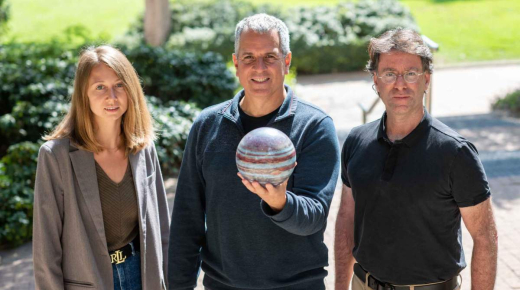
-
Date: March 22, 2023
Congratulations to Prof. Brian Berkowitz
ACS Environmental Au Best Paper Awards 2021?2022
-
Date: March 22, 2023
Congratulations to Dr. Ishai Dror
ACS Environmental Au Best Paper Awards 2021?2022
-
Date: March 14, 2023
A Little Dusty – but Alive
Read More about A Little Dusty – but AliveBecause of their minute size, microorganisms travel the world effortlessly. Winds transport them, perched on specs of dust and other airborne particles, across continents and oceans. Researchers at the Weizmann Institute of Science and elsewhere have documented this movement consistently through gene sequencing of samples extracted from air.
Read More about A Little Dusty – but Alive
-
Date: March 12, 2023
הכירו את דורי ניסנבאום, דוקטורנט בקבוצה של פרופ' יינון רודיך
Read More about הכירו את דורי ניסנבאום, דוקטורנט בקבוצה של פרופ' יינון רודיךדורי הוא איש אשכולות - מהנדס מכונות בהכשרתו, שלמד בתכנית ברקים בטכניון, התגייס לחיל האוויר ולאחר מכן הגיע לקבוצתו של פרופ' יינון רודיך על מנת לפתח מערכת עם רחפנים במחלקה למדעי כדה"א וכוכבי הלכת.
Read More about הכירו את דורי ניסנבאום, דוקטורנט בקבוצה של פרופ' יינון רודיך -
Date: February 7, 2023
הכירו את פרופ' חגית אפק, בוגרת המחלקה בקבוצתו של פרופ' דן יקיר
Read More about הכירו את פרופ' חגית אפק, בוגרת המחלקה בקבוצתו של פרופ' דן יקירחגית אפק התחילה את דרכה האקדמית אצל פרופ' דן יקיר במחלקה למדעי כדה"א וכוכבי הלכת במכון ויצמן. היום חגית היא פרופ' חבר במחלקה למדעי כדה"א באוניברסיטה העברית בירושלים.
Hagit Affek began her academic career with Prof. Dan Yakir in the EPS Department at the Weizmann Institute. Today, Hagit is an associate professor in the Department of Earth Sciences at the Hebrew University of Jerusalem.
Read More about הכירו את פרופ' חגית אפק, בוגרת המחלקה בקבוצתו של פרופ' דן יקיר -
Date: January 23, 2023
Look on the Bright Side of Earth
Read More about Look on the Bright Side of EarthWhen looking at the Earth from space, its hemispheres – northern and southern – appear equally bright. This is particularly unexpected because the Southern Hemisphere is mostly covered with dark oceans, whereas the Northern Hemisphere has a vast land area that is much brighter than these oceans. For years, the brightness symmetry between hemispheres remained a mystery.
Read More about Look on the Bright Side of Earth